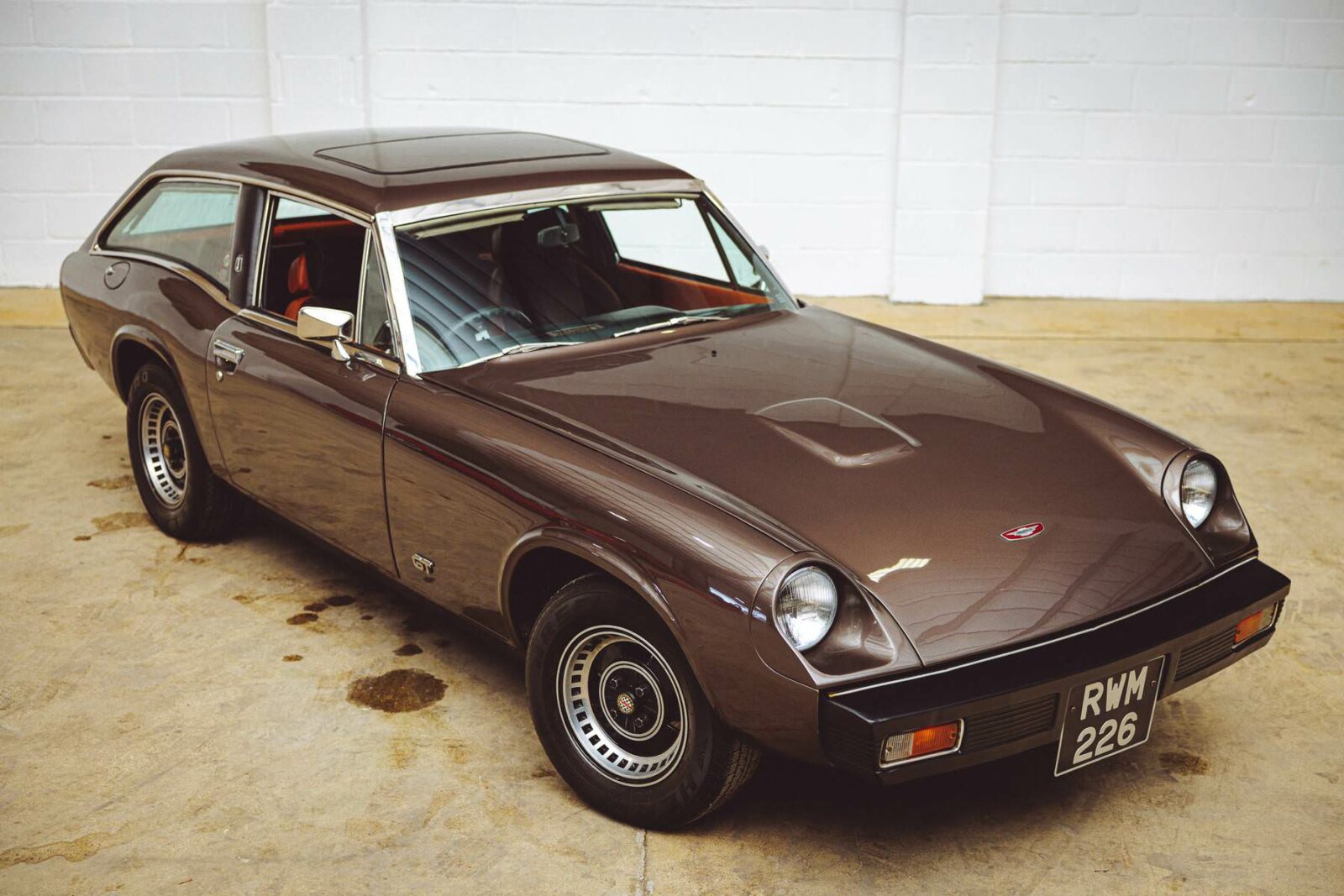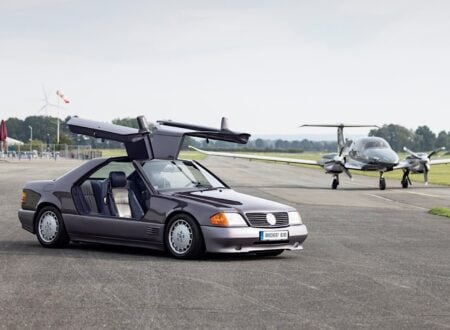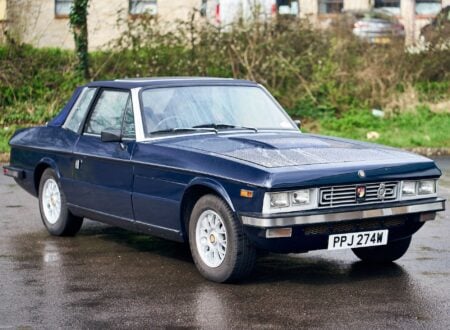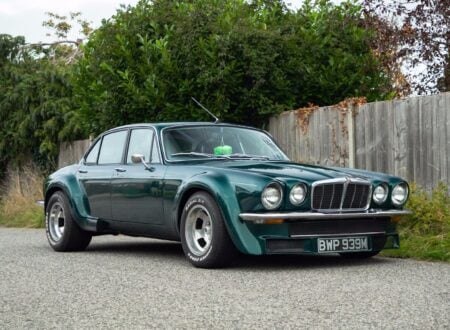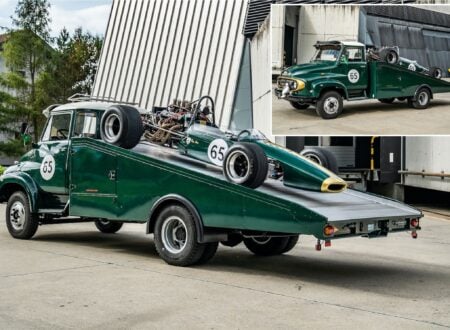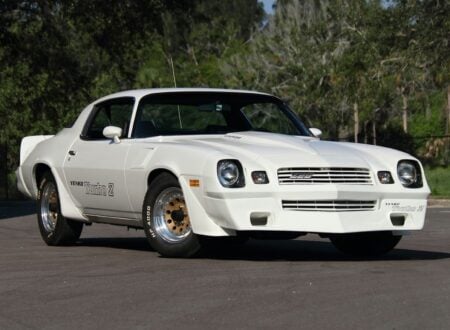The Jensen GT is the shooting brake version of the Jensen-Healey roadster, the car that went down in Sports Car Club of America (SCCA) history one of the only vehicles to win the D Production Championship in its first year of racing.
Under the hood of the Jensen GT and the Jensen-Healey you’ll find the Lotus 907 engine, an advanced DOHC, 16-valve inline-four with a lightweight alloy block and head that could make 144 bhp in street trim and plenty more when dialed up for racing.
Fast Facts – The Jensen GT
- The Jensen GT was the shooting brake version of the Jensen-Healey, a British sports car developed by Jensen and Donald Healey to fill a market niche below the Jaguar E-Type and above cars like the popular MGB roadster.
- Both the GT and the Jensen-Healey shared the same steel unibody construction, independent front suspension on coils, and rear live axle on coils, with the differences being limited to the roof section.
- Early Mark I examples of the Jensen-Healey did get a bad rap for reliability and quality control concerns, these were largely addressed in the Mark II cars. Most examples on the road today have had these issues ironed out by previous owners.
- The racing history of the Jensen-Healey is genuinely impressive, it won the SCCA D Production Championship in its first year of racing (1973) and went on to win it a further four times bringing the total to five D Production Championships.
A New Healey For A New Decade
The Jensen-Healey, a classic British sports car produced between 1972 and 1976 and it marks an oft-forgotten era of British sports car history. It was collaboration between Jensen Motors and Donald Healey – a renowned race car driver, engineer, and father of the Austin-Healey.
Above Video: This is the clip from the British television show Top Gear where Jeremy Clarkson bought himself a Jensen-Healey to use in the episode.
The Jensen-Healey aimed to fill a niche for a reasonably priced yet fast sports car in the 1970s that would sit somewhere between affordable sports cars like the Triumph GT6 and the MGB, and more high-end cars like the Jaguar E-Type.
The Beginnings of The Jensen-Healey
In the early 1970s, Jensen Motors, a British car manufacturer known for its high-end luxury vehicles like the Jensen Interceptor and the FF, was in search of a more affordable sports car to cater to a broader market.
Donald Healey, a celebrated engineer and the mastermind behind the Austin-Healey sports cars, had recently parted ways with British Motor Corporation (BMC) and was looking for a new project on which to focus his attention after the end of the Austin-Healey production run.
The Jensen-Healey was designed by Hugo Poole with additional work done by William Towns, the car featured a sleek and very 1970s-style roadster body.
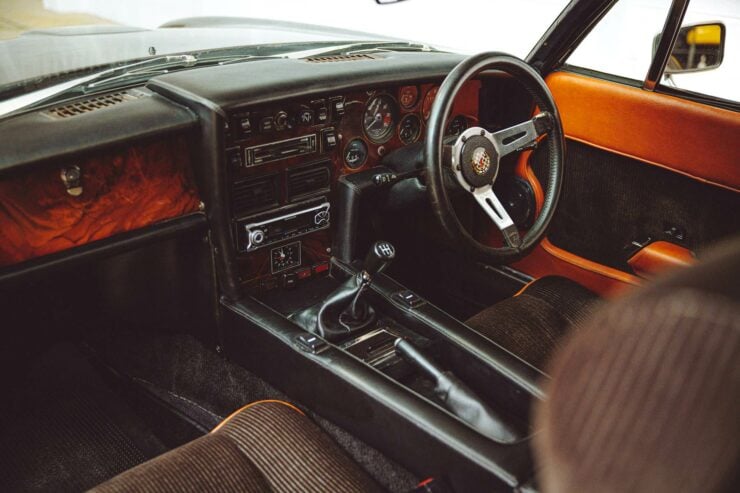

The car’s mechanical components were sourced from various manufacturers, with the most significant contribution being the Lotus 907 engine, a powerful 2.0 liter, 16-valve, twin-cam inline-four cylinder engine, which became one of the Jensen Healey’s defining characteristics.
Interestingly there had been much consternation early on in the project about which engine to use. Initially they looked at potential power units from Vauxhall, Ford, and BMW however for one reason or another none of them were suitable.
Colin Chapman came along with his advanced new Lotus 907 engine, historically significant as it’s claimed to be the first mass-produced double overhead cam four-valve inline four-cylinder engine.
Given the engine’s all-alloy construction it was lightweight, it was installed at an angle to help lower the center of gravity and hood line, and in 907 trim it produced 144 bhp, giving the Jensen-Healey a top speed of 120 mph and a 0-62 mph time of just 7.8 seconds – both impressive figures for the era.
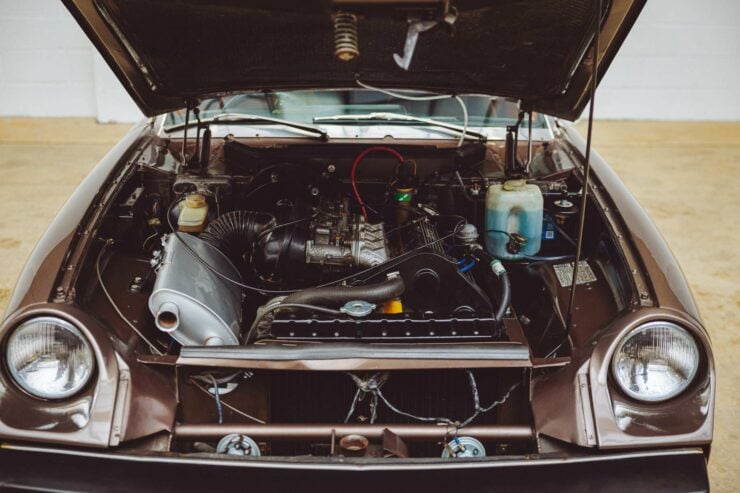

The Jensen-Healey made its debut at the 1972 Geneva Motor Show, garnering praise for its striking design and impressive performance. Production began shortly after, with the first cars reaching customers later that year.
Jensen-Healey: Production and Evolution
During its production run, the Jensen-Healey underwent a series of improvements and changes. The initial models, known as the Mark I, were produced between 1972 and 1973. These early models faced several reliability issues, particularly with the Lotus engine, which led to ongoing work to improve the car and address the issues.
These problems included early teething trouble with the production of the car with unsatisfactory paint finish and leaking soft tops, but the biggest issue was the then-new and largely untested Lotus 907 engine. Lotus struggled to meet the demand for hundreds of the engines per week and there were still some design issues early on that needed to be resolved, some engines suffered from slipping timing belts, oil leaks, and oil pressure problems.
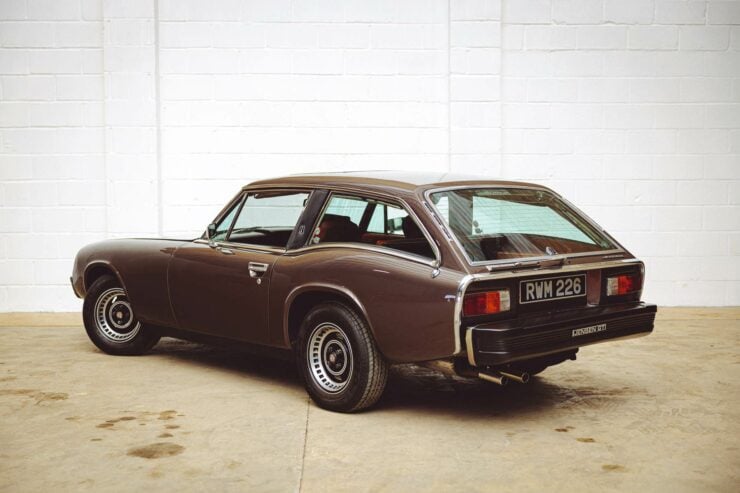

By the time these problems had been addressed and corrected the Jensen-Healey had acquired a somewhat unsavory reputation, despite the fact that well-sorted examples were highly-capable sports cars by the standards of the era.
In 1973, the Mark II was introduced, featuring a revised engine and several cosmetic and mechanical improvements. The Mark II proved to be a more reliable and better-performing car, addressing many of the concerns that plagued those early Mark I models.
In addition to the roadster, Jensen Motors introduced the Jensen GT in 1975, a shooting brake variant of the Jensen-Healey. The GT featured a redesigned roof, hatchback, and increased luggage space, making it a more practical option for long-distance touring.
However, the GT was short-lived, with production ceasing in 1976 alongside the Jensen-Healey roadster. The Jensen GT is now the rarest of the production Jensen-Healeys and the fact that it’s such a practical and visually unusual vehicle has seen it become a cult classic in its own right.
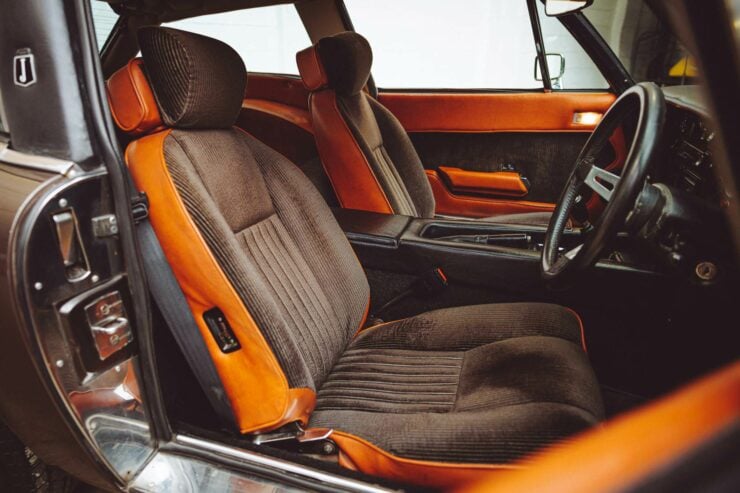

The Jensen-Healey’s production came to an end in 1976, with a total of approximately 10,500 vehicles produced, including both the roadster and GT models. The car’s demise was due in part to financial difficulties faced by Jensen Motors, leading to the company’s eventual closure.
Despite its relatively short production run and initial reliability concerns, the Jensen-Healey remains a largely unknown part of British automotive history, despite its remarkable successes on the race tracks of North America.
The Jensen GT Shown Here
The Jensen GT you see here is an original 1975 model and one of just 37 that left the West Bromwich factory in this colour – brown was a popular color for cars in the 1970s after all.
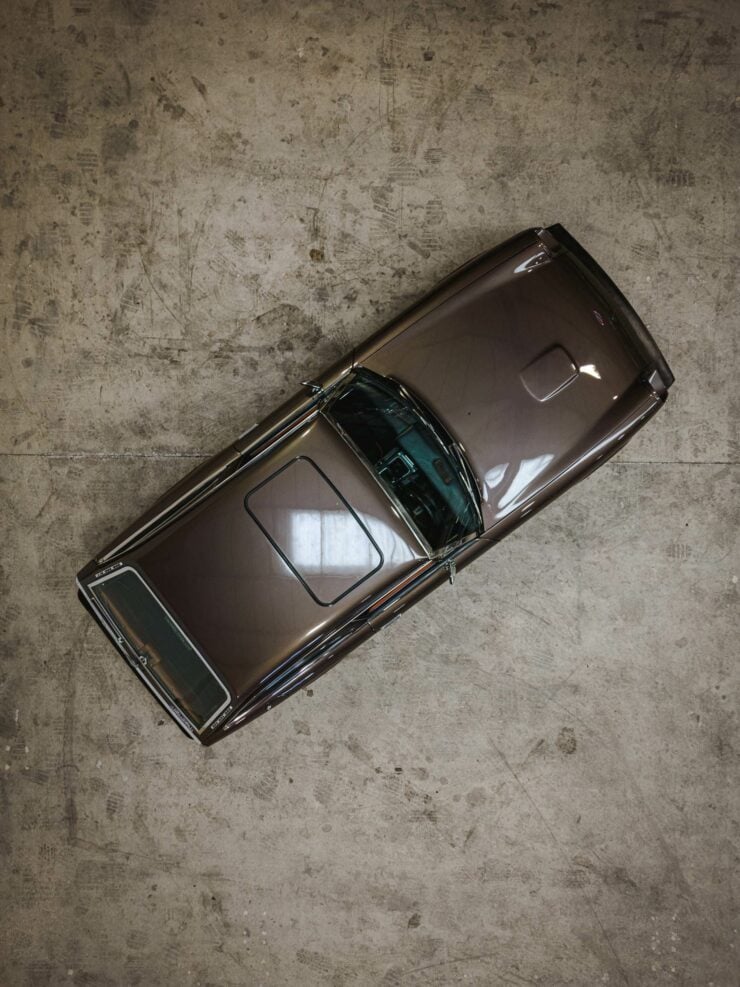

Though many Jensens have fallen into disrepair and some have eve been scrapped, this Jensen GT benefits from a full restoration that was completed in 1996 by Martin Robey – the company that acquired all the tooling, documentation, and intellectual property from the Jensen Motors’ liquidation proceedings.
It was stored for a time and the current owner has had the car recommissioned more recently ready for road use, though it’s worthing noting that the tires are 15 years old and should be changed before any spirited driving is attempted.
If you’d like to read more about this unusual shooting brake or register to bid you can visit the listing on The Market by Bonhams here. It’s being offered for sale out of Abingdon in the United Kingdom with a price guide of £18,000 – £22,000 or approximately $24,120 – $29,260 USD.
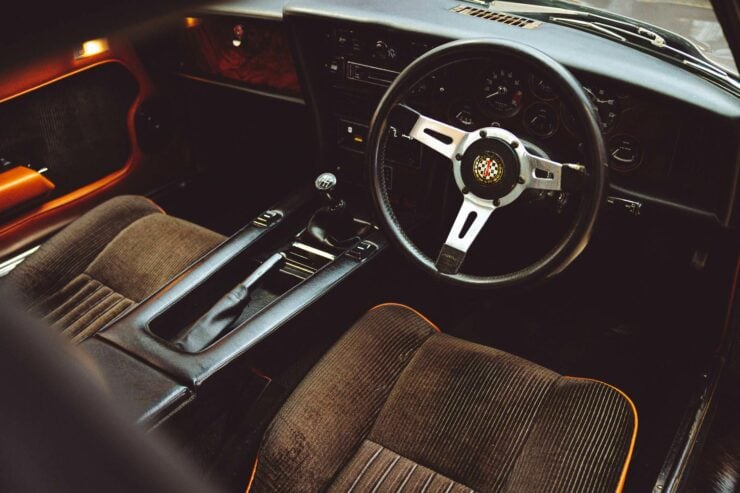
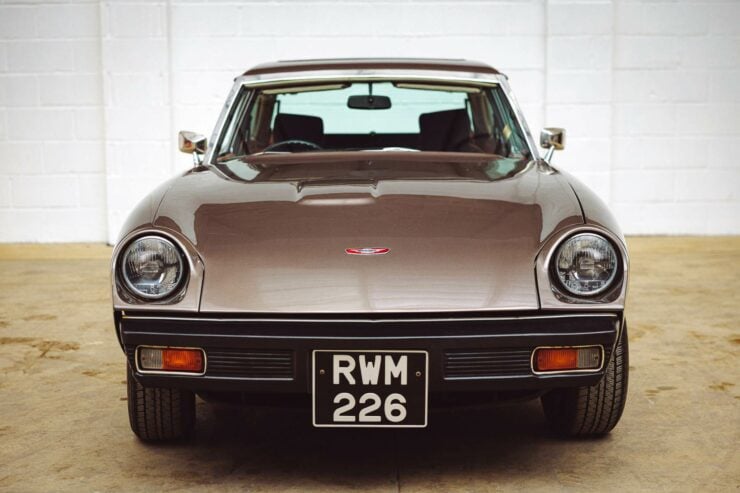

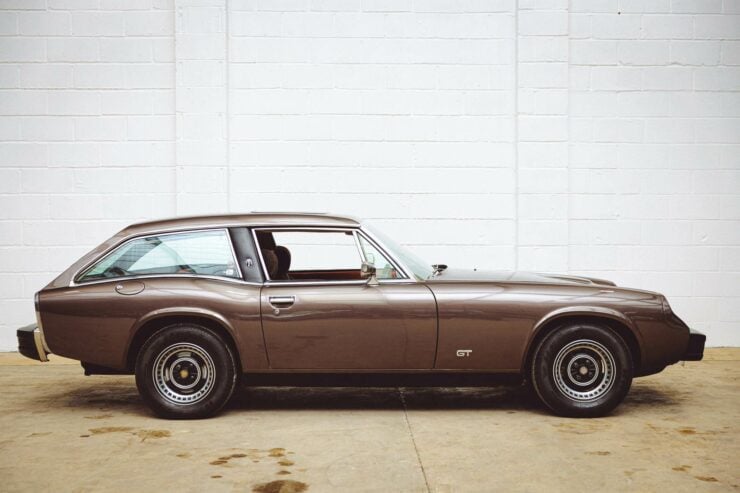
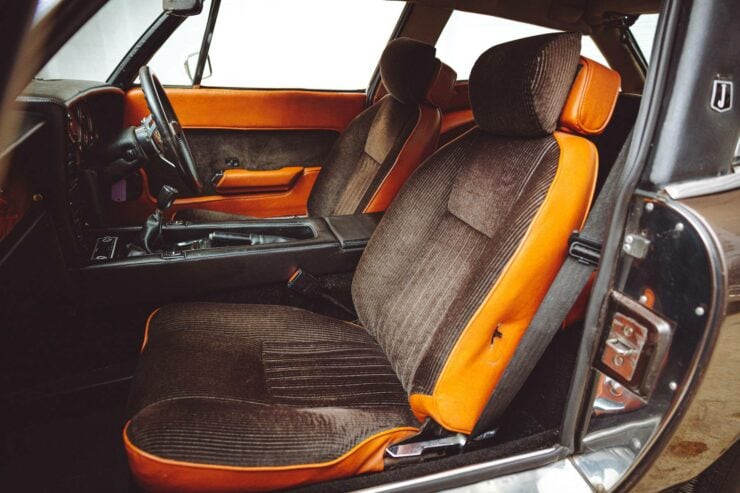
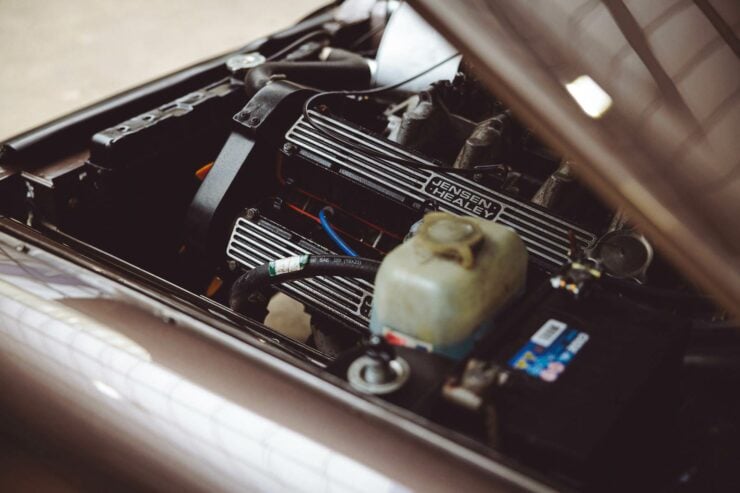
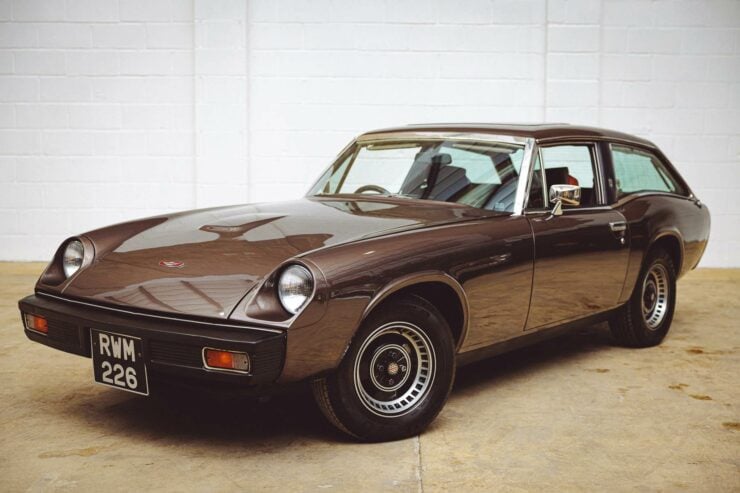
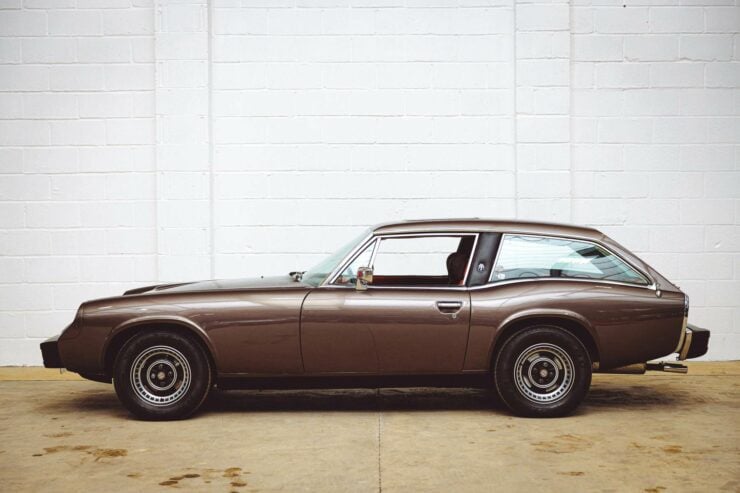
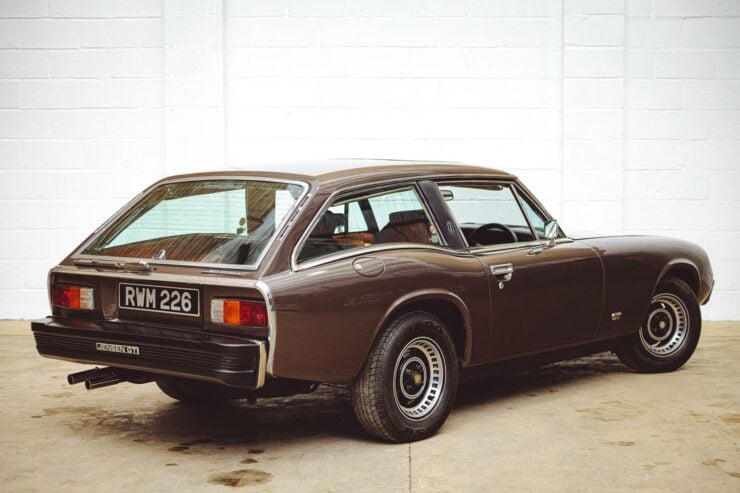
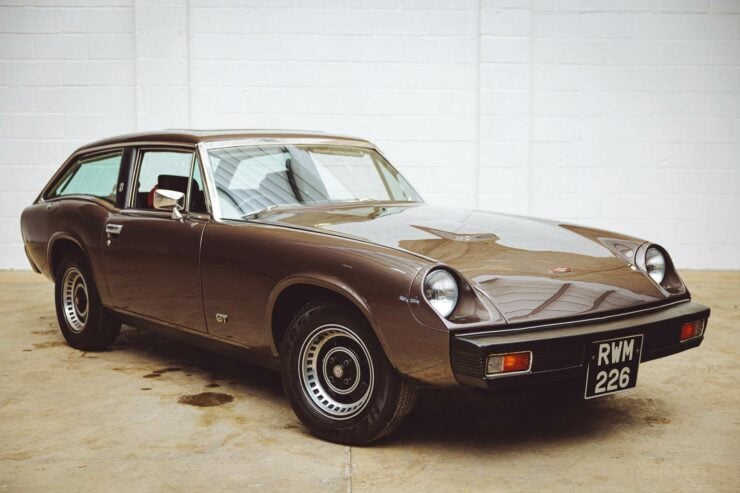
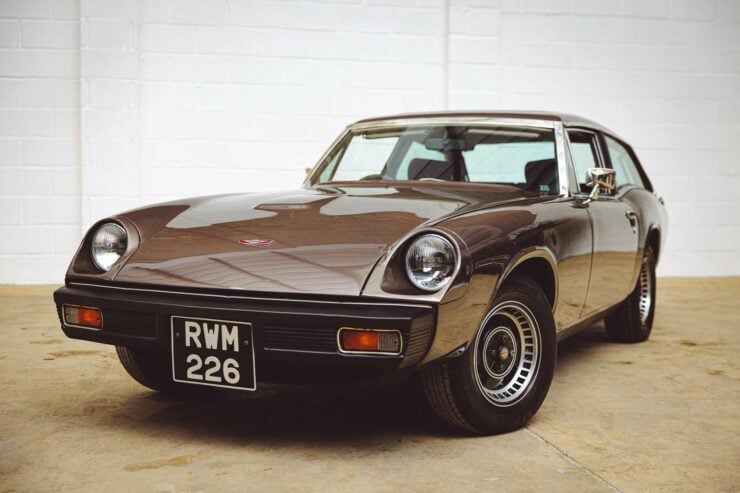
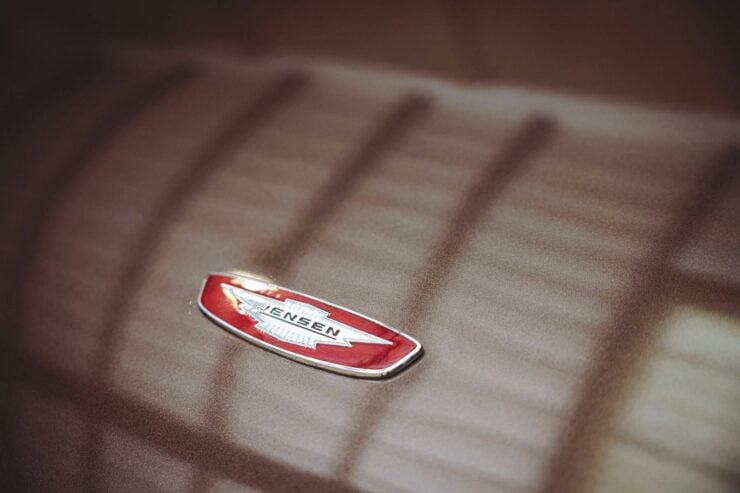
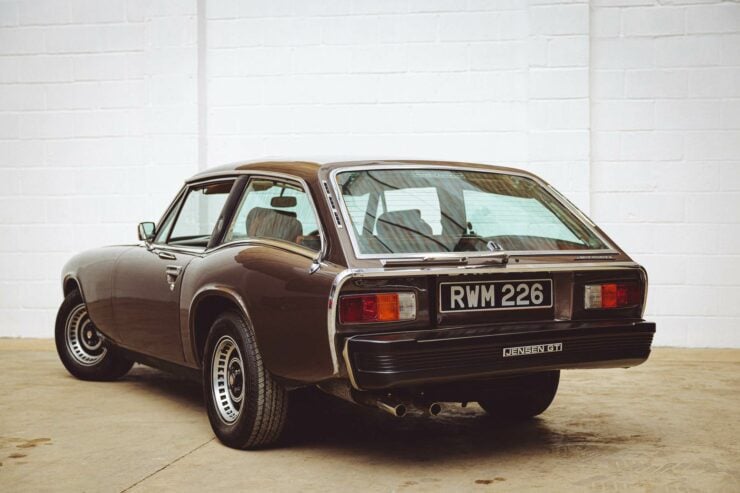
Images courtesy of The Market by Bonhams

Articles that Ben has written have been covered on CNN, Popular Mechanics, Smithsonian Magazine, Road & Track Magazine, the official Pinterest blog, the official eBay Motors blog, BuzzFeed, Autoweek Magazine, Wired Magazine, Autoblog, Gear Patrol, Jalopnik, The Verge, and many more.
Silodrome was founded by Ben back in 2010, in the years since the site has grown to become a world leader in the alternative and vintage motoring sector, with well over a million monthly readers from around the world and many hundreds of thousands of followers on social media.

